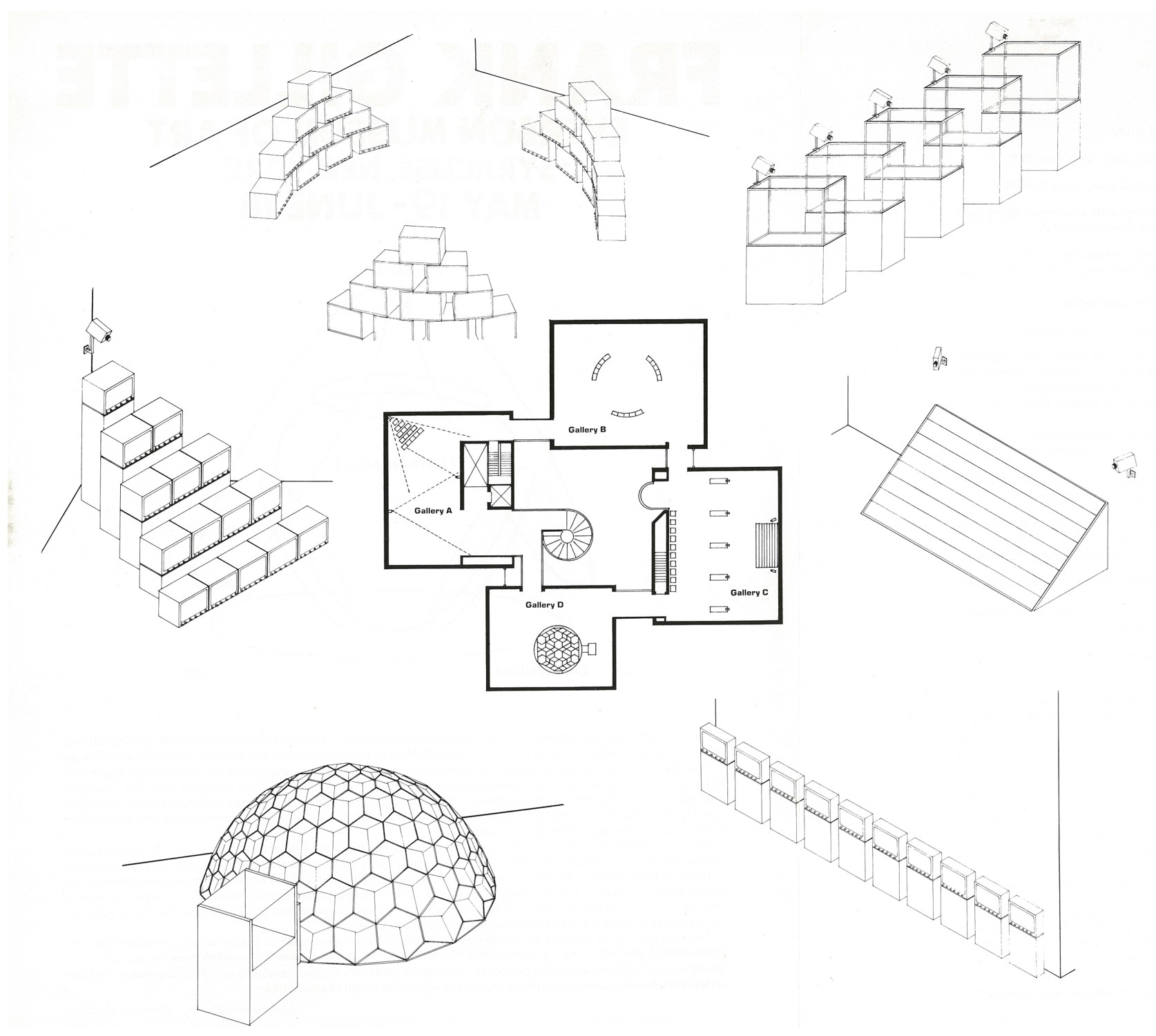On May 19, 1973, the Everson Museum of Art opened a month-long, solo exhibition featuring th work of video artist Frank Gillette. The exhibition was part of Director Jim Harithas’s endeavor to make the Museum a pioneer institution for collecting and exhibiting video and time-based art. Gillette’s exhibition was the first show featuring a video artist to fill all four upper galleries.

The brochure accompanying the exhibition included a schematic drawing of the galleries that described the location of each work in the exhibition. Corresponding text identifies the works and reveals Gillette’s use of text, video, and even living organisms as artistic mediums. One installation in Gallery D, Gestation/Growth, included an incubator and dome where eggs were hatched into chickens, who then matured over a period of twenty-one days.

Terraquae, installed in Gallery C, featured five cases housing various organisms, such as bacterial molds, iguanas, snails, crabs, and tarantulas. A camera recorded the life cycle of the organisms and transmitted live video to monitors placed along one wall in the gallery. In a joking response to this installation, an Everson staff member penned a fake press release, stating that the Museum had cancelled the exhibition due to a fatal tarantula mishap that resulted in the death of the artist and four spiders lost in the Museum. Other seminal works, like Track/Trace and Tetragramaton, that explore time, space, audience, and the self were installed in Galleries A and B.
Forty-six years later, Track/Trace has returned to the Everson, along with many new works by the artist, for the current exhibition Frank Gillette: Excavations and Banquets on view through April 21, 2019.
-Maggie Teschler, Curatorial Intern
Image captions
- Diagram from exhibition brochure for Frank Gillette, May 19 – June 18, 1973
- 2 and 3: Visitors enjoying the installations. Photo credit Kerby Smith/Everson Museum



